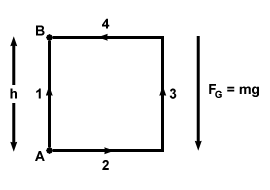Please wait while we process your payment
If you don't see it, please check your spam folder. Sometimes it can end up there.
If you don't see it, please check your spam folder. Sometimes it can end up there.
Please wait while we process your payment

By signing up you agree to our terms and privacy policy.
Don’t have an account? Subscribe now
Create Your Account
Sign up for your FREE 7-day trial
By signing up you agree to our terms and privacy policy.
Already have an account? Log in
Your Email
Choose Your Plan
Individual
Group Discount
Save over 50% with a SparkNotes PLUS Annual Plan!
 payment page
payment page
Purchasing SparkNotes PLUS for a group?
Get Annual Plans at a discount when you buy 2 or more!
Price
$24.99 $18.74 /subscription + tax
Subtotal $37.48 + tax
Save 25% on 2-49 accounts
Save 30% on 50-99 accounts
Want 100 or more? Contact us for a customized plan.
 payment page
payment page
Your Plan
Payment Details
Payment Summary
SparkNotes Plus
You'll be billed after your free trial ends.
7-Day Free Trial
Not Applicable
Renews July 25, 2025 July 18, 2025
Discounts (applied to next billing)
DUE NOW
US $0.00
SNPLUSROCKS20 | 20% Discount
This is not a valid promo code.
Discount Code (one code per order)
SparkNotes PLUS Annual Plan - Group Discount
Qty: 00
SparkNotes Plus subscription is $4.99/month or $24.99/year as selected above. The free trial period is the first 7 days of your subscription. TO CANCEL YOUR SUBSCRIPTION AND AVOID BEING CHARGED, YOU MUST CANCEL BEFORE THE END OF THE FREE TRIAL PERIOD. You may cancel your subscription on your Subscription and Billing page or contact Customer Support at custserv@bn.com. Your subscription will continue automatically once the free trial period is over. Free trial is available to new customers only.
Choose Your Plan
This site is protected by reCAPTCHA and the Google Privacy Policy and Terms of Service apply.
For the next 7 days, you'll have access to awesome PLUS stuff like AP English test prep, No Fear Shakespeare translations and audio, a note-taking tool, personalized dashboard, & much more!
You’ve successfully purchased a group discount. Your group members can use the joining link below to redeem their group membership. You'll also receive an email with the link.
Members will be prompted to log in or create an account to redeem their group membership.
Thanks for creating a SparkNotes account! Continue to start your free trial.
We're sorry, we could not create your account. SparkNotes PLUS is not available in your country. See what countries we’re in.
There was an error creating your account. Please check your payment details and try again.
Please wait while we process your payment

Your PLUS subscription has expired
Please wait while we process your payment
Please wait while we process your payment

Conservative vs. Nonconservative Forces
Gravity is the most common conservative force, and to demonstrate that it is conservative is relatively simple. Consider first a ball thrown up into the air. On the ball's trip upward, gravity works against the motion of the ball, producing a total work of - mgh. This negative work causes the ball to slow down until it stops, reverses direction and begins to fall. During its fall, the force of gravity is in the same direction as the motion of the ball, and the gravitational force does positive work of magnitude mgh, accelerating ball until it reaches the ground with the same speed with which it left. What is the net work done by gravity on the ball over this closed loop? Zero, as we expect by our first principle of conservative forces.
What about our second principle? Let's construct two alternative paths for a
ball being thrown up into the air:

Friction is the most common nonconservative force, and we will demonstrate why it is not conservative. Consider a crate on a rough floor, of weight W. The crate is pushed from one end of the floor to the other, a distance of h meters, and then back to its original spot. What is the net work done on the crate? At all times the friction opposes the motion of the crate, exerting a force of μkW at all times. Thus the total work done over the trip is simply (- 2)(μkW)(h) = - 2hwμk, clearly not equal to zero. The net work by friction over a closed path is not zero, and it is nonconservative.
Is friction path independent? We expect not, because we know it is nonconservative. To prove the suspicion, simply consider two possible ways to move a crate between two points on a rough floor. One is a straight line, one is a somewhat longer route. No matter the path, the force is the same at all times that the crate is moving. The difference, however, is that friction acts over a longer distance in the case of the second path, causing a greater net work to be done. Thus friction is not path independent, and we confirm that it is nonconservative.
The distinctions between conservative and nonconservative forces may seem somewhat arbitrary at this point. However, in the next section we will see that conservative forces, because of the properties developed in this section, allow for incredible simplification of otherwise difficult mechanics problems.
Please wait while we process your payment

